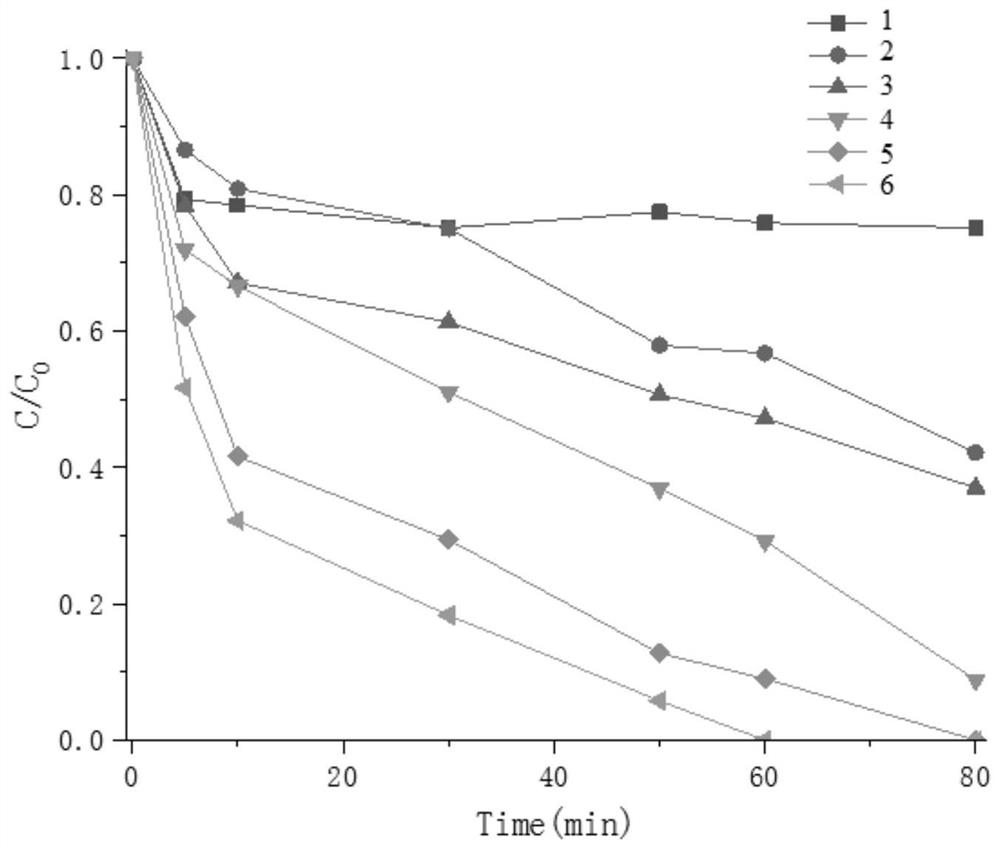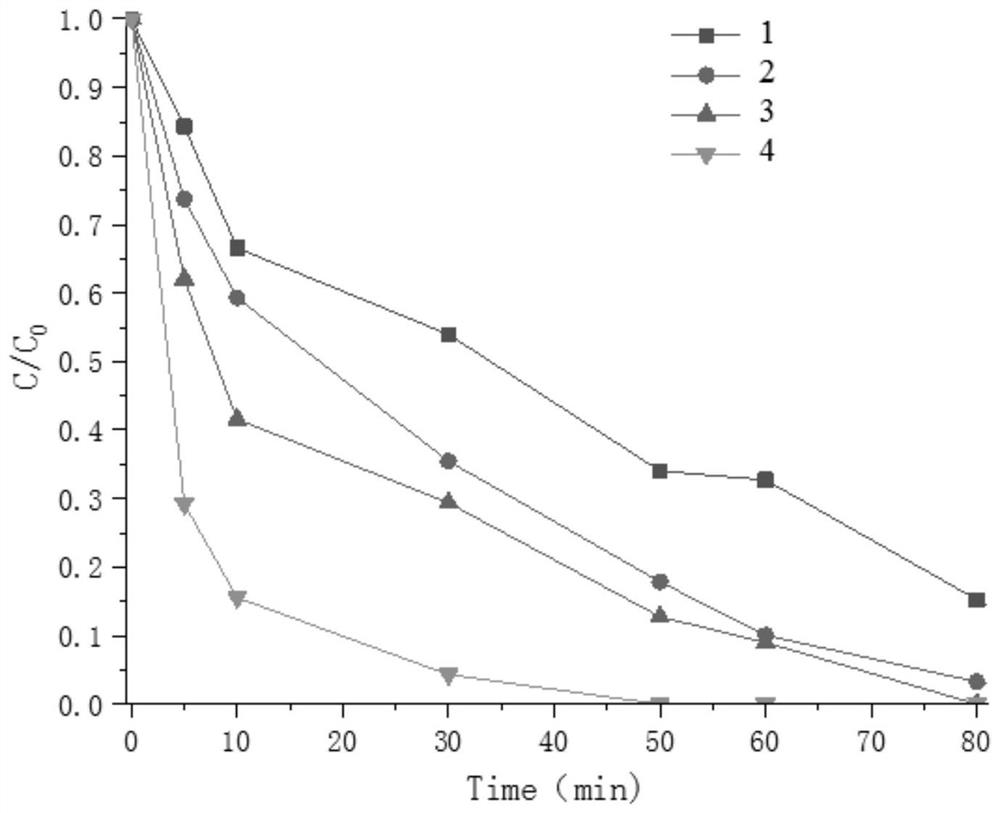Preparation method and application of carbon-based catalyst from excess sluge
A carbon-based catalyst and excess sludge technology, applied in catalyst activation/preparation, chemical instruments and methods, physical/chemical process catalysts, etc., can solve secondary pollution carbon nanotube activation costs, poor disinfection effect, activation energy consumption Advanced problems, to achieve the effect of improving biochar performance, strong adsorption and catalytic performance, and large specific surface area
- Summary
- Abstract
- Description
- Claims
- Application Information
AI Technical Summary
Problems solved by technology
Method used
Image
Examples
specific Embodiment approach 1
[0023] Specific embodiment one: In this embodiment, a method for preparing carbon-based catalysts from excess sludge is completed in the following steps:
[0024] 1. Dehydration: Dewater the excess sludge to obtain the dehydrated excess sludge;
[0025] 2. Drying: drying the remaining sludge after dehydration to obtain the remaining sludge after drying;
[0026] 3. Activated sludge: use the chemical activation method to activate the residual sludge after drying to obtain activated residual sludge;
[0027] 4. Introducing transition metals into the activated residual sludge by loading, blending or hydrothermal method;
[0028] The transition metal described in step 4 is Fe, Mn or Co;
[0029] 5. Washing and drying: use deionized water to wash the excess sludge introduced with transition metals, and then dry to obtain a carbon-based catalyst;
[0030] The number of times of washing in step 5 is 3 to 5 times, the drying temperature is 50°C to 70°C, and the drying time is 6h to...
specific Embodiment approach 2
[0031] Embodiment 2: The difference between this embodiment and Embodiment 1 is that the excess sludge described in step 1 is a mixture of one or both of the excess sludge in the primary settling tank and the excess sludge in the secondary settling tank; The dehydration described in step 1 is centrifuged at a centrifugal speed of 3000r / min~5000r / min for 10min~20min; Dry in a drying oven for 6h to 8h. Other steps are the same as in the first embodiment.
specific Embodiment approach 3
[0032] Specific embodiment three: the difference between this embodiment and specific embodiment one or two is: the specific process of the chemical activation method described in step three is: the residual sludge after drying and the activator are mixed according to the mass ratio of 1 : (1-10) mixed, then ground evenly, placed in a tube furnace, under the protection of nitrogen with a gas flow rate of 200mL / min, heated to 650-850°C at a rate of 5°C / min, and then activated at a constant temperature for 1h ~3h, naturally cooled to room temperature to obtain the product after activation treatment; use hydrochloric acid to pickle the product after activation treatment for 3h~12h to obtain the remaining sludge after activation; the mass fraction of the hydrochloric acid is 37%; the The activator mentioned is ZnCl 2 , KOH, NaOH, K 2 CO 3 and KHCO 3 one or more of. Other steps are the same as those in Embodiment 1 or 2.
PUM
| Property | Measurement | Unit |
|---|---|---|
| quality score | aaaaa | aaaaa |
| clearance rate | aaaaa | aaaaa |
| clearance rate | aaaaa | aaaaa |
Abstract
Description
Claims
Application Information
 Login to View More
Login to View More - R&D
- Intellectual Property
- Life Sciences
- Materials
- Tech Scout
- Unparalleled Data Quality
- Higher Quality Content
- 60% Fewer Hallucinations
Browse by: Latest US Patents, China's latest patents, Technical Efficacy Thesaurus, Application Domain, Technology Topic, Popular Technical Reports.
© 2025 PatSnap. All rights reserved.Legal|Privacy policy|Modern Slavery Act Transparency Statement|Sitemap|About US| Contact US: help@patsnap.com



